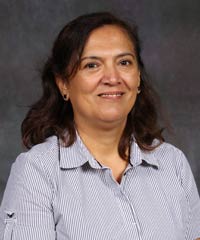Accessibility Resources
Missouri State University and the Faculty Center for Teaching and Learning are committed to supporting faculty and staff as they strive to proactively address learning barriers for all students and strive to create inclusive learning environments.
Celebrating Faculty for Making Learning Accessible
Making Music Visible

Thank you, Dr. Kelts and graduate students, Joelle Manns & Zoe Barnes, for going above and beyond to make learning how to make music accessible for every student!
Providing an Equitable Learning Experience



The MSU Geology 110 lab provides immersive and interactive experiences for students through the use of multimedia instructional approaches utilizing ivirtual reality, photos, and diagrams. When faced with the reality that some of these tools may not be readily accessible to all students, a team from the Geography, Geology, and Planning Department collaborated with each other and the disability resource center to find ways to "provide the student who is blind with a similar and meaningful educational experience." The team sought out information from colleagues outside of the university who have implemented strategies to support students who are visually impaired (Communicating Beyond Visuals). Additionally, audio descriptions of virtual reality experiences were created, a lab teaching assistant was provided, and diagrams used within the course were sent to the Disability Resource Center/ATC to be turned into tactile graphics to facilitate an immersive experience for students who are visually impaired.
Thank you Drs. Dogwiler, Michelfelder, and Guttierez; lab TA Anna Rickey; and lab assistant Hanlin Zhang for going above and beyond to provide equitable learning experiences through strategies to increase student access to interactive learning.
Campus Resources
Instructional designers can assist you in making your course more accessible by working with you to develop instructional strategies and technological solutions that accommodate a variety of learner needs.
Accessibility at Missouri State
A central location to assist you in finding information on campus services related to accessibility accommodations, policies, and guidelines, as well as where you can report an accessibility issue.
Disability Resource Center(DRC)
The DRC can support faculty through the process of providing student accommodations.
Learning Diagnostic Clinic (LDC)
The LDC offers testing for learning disabilities, ADHD, autism, and other psychological disorders that may affect learning.
Microsoft Office
Microsoft Word: Creating Accessible Word Documents
You need Adobe Reader to view and print this document.
Microsoft Word: Creating Accessible Documents by WebAIM
This website by WebAIM provides best practices for making word documents accessible
and includes instructions for multiple versions of MS Word.
Microsoft Word Accessibility Checker
Allows you to check for accessibility issues in documents using Microsoft Word 2010-2016
(PC Only).
Adding Alt Txt to Images in Microsoft Word
This tutorial, produced by Colorado State University, walks you through how to add
alternative text to images so they can be read by students who rely on screen reading
software.
PowerPoint Accessibility by WebAIM
This website by WebAIM outlines how to make your PowerPoints more accessible.
Cheatsheets by NCDAE
These free, one-page accessibility resources, or “cheat sheets” for a number of common
PC applications such as:
- Word
- PowerPoint
- Excel
- PDFs
- YouTube
- InDesign
- Web design
These guides have been developed by NCDAE to assist anyone who is creating accessible content. Each option includes a PDF download option.
Video Resources
Captioning Your Videos with Microsoft Stream
Microsoft Stream is a video-streaming service available to faculty, staff, and students in the Missouri State University network through their Microsoft Office 365 account. Using Stream, you can securely upload, view, organize, and share videos. Stream can be used by people who are interested in using videos in the workplace to connect, collaborate, learn, and share information. You can share videos within an organization or with a specific person or people, watch and share videos from your mobile device, and start and attend live-streaming events. A very useful feature of Microsoft Stream is the captioning and interactive transcript that is auto-generated for each video. Once you have uploaded a video to your Microsoft Stream account and the captioning has rendered, you can fully edit and customize these captions using the interactive transcript.
- Creating Closed Captions in Microsoft Stream (YouTube Video walk-through 4K)
- Instructions for Using Microsoft Stream to Caption Videos PDF
You need Adobe Reader to view and print these documents.
Using YouTube to Caption Videos
The National Center on Disability and Access to Education (NCDAE) provides instructions for Captioning YouTube Videos using YouTube's auto transcription service. A printable copy of the instructions
is also available on their website.
Additional Resources
Using Google Docs for Optical Character Recognition (OCR)
Did you know Google Docs has built in OCR? OCR is useful in the process of converting
inaccessible scanned documents into documents that are accessible for someone using
screen reading software.
You need Adobe Reader to view and print these documents.
UDL On Campus
CAST’s site for Universal Design for Learning in Higher Education.
WebAIM
WebAIM (Accessibility in Mind), based at Utah State University, has been providing
accessibility solutions since 1999. Their website provides a variety of resources
and trainings for creating accessible instructional materials and resources.
Article: Campus Technology: Essentials of Digital Accessibility
From "Essentials of Digital Accessibility" by Harriette L. Spiegel:
"Digital accessibility is a hot topic in higher education these days, and training faculty in creating accessible digital materials is on the mind of every instructional designer or educational technology team. The question of how to accomplish this training is a topic in itself, but this article outlines some of the most common issues that confront faculty when making their course content accessible. These issues are Headings, Alt Text, Meaningful Hyperlinks and Tables."